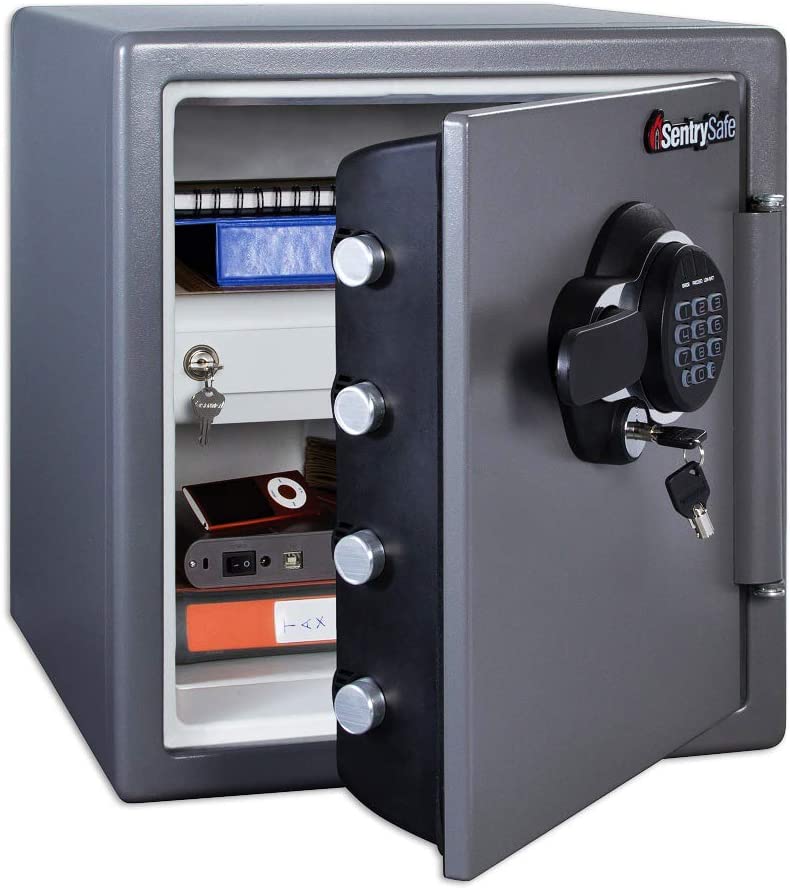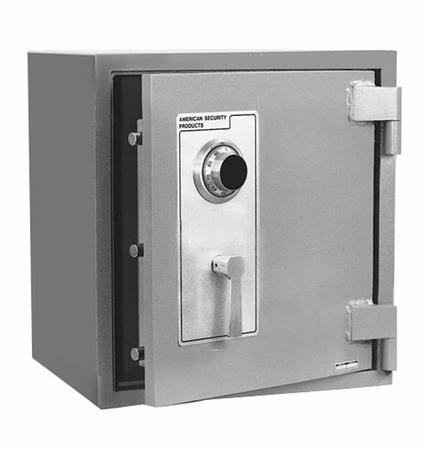
FREE SHIPPING
*On Orders Over $250We Call Within 48 Business Hours to Confirm Order
FREE SHIPPING
*On Orders Over $250We Call Within 48 Business Hours to Confirm Order
Purchasing a safe can be a big investment, but how do you know you're getting the right safe for your needs? Safe burglary ratings can be very confusing.
Safe burglary ratings range from: none, B-rated, C-rated, E-rated, RSC I, RSC II, TL-15, and TL-30, with TLX6 being the highest commonly available rating. Only RSC I and above ratings are independently tested and verified by a third-party testing facility.
What do those burglary ratings mean? Let's break down the common safe burglary ratings so you know what they are, and you can make a safe purchase with the confidence of understanding the level of security you are buying.
| Rating | Is It a Certified Rating? | Summary of Rating | Recommended for Values Up To |
|---|---|---|---|
|
None |
No | Keep honest people honest | $1,000 |
| B-Rated | No | 1/4" steel sides, 1/2" Door | $10,000 |
| C-Rated | No | 1/2" thick sides, 1" thick door | $20,000 |
| E-Rated | No | Similar Features to a TL-15 | $35,000 |
| RSC I | Yes | Withstands 5 Minute Attack from Hand Tools | $20,000 |
| RSC II | Yes | Withstand 10 Minute Attack by 2 people, Wider Variety of Tools | $75,000 |
| TL-15 | Yes | Withstand 15 Minute Attack from Wider Variety of Tools | $75,000 |
| TL-30 | Yes | Withstand 30 Minute Attack from Wider Variety of Tools | $175,000 |
| TL-30X6 | Yes | TL-30 on All Sides | $500,000+ |
There are a couple systems for safe ratings (at least in the United States). One is developed by insurance companies, and mainly focuses on safe construction, and the other by Underwriters Laboratories (UL Safe Ratings), which offer test performance ratings.

 Safes With No Burglary Ratings
Safes With No Burglary RatingsSafes with no burglar rating are commonly classified as home safes or simply fire safes. They vary wildly in construction, some even have plastic casing or very thin (18-22 gauge) steel. These safes are intended to protect documents from fire and to keep out kids or house services. Basically, they keep honest people honest. They should not be used to protect anything of true value.
A B-rated safe is a safe constructed with a safe body at least ¼-inch thick steel (total), and a door at least ½-inch thick. A B-rated safe is not a certified burglary rating. It is a construction requirement.

If it has a lock on it (even a padlock!), and meets the material thicknesses specified, it is B-rated.
There's no testing associated with this rating, and only these bare minimums are required. This are commonly designed for home and business use.
A B-rated safe is not necessarily a 'weak' safe. Look for features such as the number of active/inactive bolts in the door, the diameter of the bolts, thickness of the steel and re-locker mechanisms; all of which are anti-burglary measures.
If you are storing small valuables, a B-rated safe can provide sufficient protection.
B-rated safes are recommended for content up to $10-15,000

A C-rated safe is one which is constructed of steel at least ½-inch thick, with a door of at least 1 inch thick, and a lock. A C-rated safe is not a certified burglary rating. It is a construction requirement.
But a C-Rated safe with a hard plate and re-locking device can be a formidable opponent against a burglary attempt, and can safely store small or large valuables.
C-rated safes can be used to store content up to $20-25,000.

E-rated safes must have a steel door of at least 1.5" thick and walls of at least 1" thick. A E-rated safe is not a certified burglary rating. It is a construction requirement. A safe with this rating generally has similar construction features as a TL-15 rated safe (see below), but it hasn't gone through product testing.
Though they have similar construction features, because they lack an official rating, we recommend valuable less than $35,000 be stored in them.
RSC stands for “Residential Security Containers.” You can view RSC rated safes on our safe website.
This safe rating changed in 2018 to now have 3 levels of testing which determine whether the safe can be rated RSC I, RSC II, or RSC III.
Most often, safes with this rating are what you think of when referring to a 'gun safe'. These are product tested by expert safe technicians who have access to the blueprints and the safe itself, which they can disassemble, to see how it works.
From there, knowing far more than a typical thief would, they attempt to access the safe. The safe is then given its RSC rating primarily based on how long it takes to get into the safe. This time duration is a bit misleading; only time in which a tool is in contact with the safe is counted, so the actual process can take far longer.


An RSC I safe rating requires that the safe withstands a 5-minute attack by one person using common hand tools like screwdrivers, drills, and hammers. It needs either a UL Group II combination lock or a Type 1 electronic lock. The door construction needs to be equivalent to 3/16-inch hearth steel, and the walls constructed of at least 12-gauge steel (or equivalent). It is UL-rated and certified.
If it meets these requirements, it gets this rating.
But many home safes can far exceed this requirement, which is why it was determined that expanding the testing could help end-users better understand construction quality in an RSC safe.
Many RSC I safes currently available far exceed the RSC I standard, but were tested before the higher RSC ratings existed.
Look for features like a higher numbers of bolts, larger bolt diameter, re-lockers, concrete lined walls, and hardened steel plates to help determine the quality of one RSC-I safe over another.
The tools used in the test include hammers, chisels, adjustable wrenches, pry bars, punches, screwdrivers and a 3/8 hand drill with 1/4 inch drill bit. The hammers cannot exceed 3 pounds and no tool is to exceed 18 inches in length.
RSC I rated safes can store valuables of up to $20-25,000.

RSC II rated safes are able to withstand a 10-minute attack from two people instead of one, using more robust tools including picks, high-speed drills, and carbide bits. They are UL rated. The tool complement is the same as a TL-15 rated safe, so it is a far more robust test, for twice as long, with twice the people trying to gain access.
A residential safe with an RSC II rating is more like a commercial safe. Since the superior rating is relatively new, and testing happens only once every 7 years, the product line on the market is still limited, but if you see one, you'll know that's a good quality safe suitable for your valuables.
Some of the tools used in the test includes sledge hammers up to 10 lbs, chisels, wrenches, pry bars up to 6', 1/2 hand drill with 1/2 inch drill bits, a 30" pick, 35" axe, carbide hole saw up to 3", and a wedge and log splitter.
RSC-II rated safes are suitable for valuables of up to $75,000
So far as I know, these are not yet in the marketplace. They are like the RSC-II's in their testing, but would also include a wider range of tools with which to try to gain access.

Shop High Security Burglar Rated Safes
TL rated safes are those graded by the UL with robust construction exceeding what is common in a home safe, but some end-users want the added security of a commercial-grade safe body. If you are protecting valuables in access of $25,000, these are the safes you want to consider.
The TL15 rated safes offer more durability and can withstand more robust attacks against them. The locks on them (either manual or electronic) have more strict standards as well. The materials will be thicker, harder, and the construction designed with anti-burglary features.
TL-15 rated safes are UL rated and can withstand at least 15 minutes of attack from one safe expert using common but robust hand tools, picking tools, electric tools, and carbide drills. Some of the tools used in the test includes sledge hammers up to 10 lbs, chisels, wrenches, pry bars up to 6', 1/2 hand drill with 1/2 inch drill bits, a 30" pick, 35" axe, carbide hole saw up to 3", and a wedge and log splitter.
View TL-15 Rated High Security Safes on our safe website.
Insurers may refer to this as an “ER”-rated safe. Like the RSC rated safes, tool time is only counted while the tools are in contact with the safe, so the actual testing takes longer than the rating implies. The testing is comparable to the RSC-II testing, above, but is actually 5 minutes less time, as this 15 minutes is for one technician, while the RSC-II is 2 technicians for 10 minutes each.
TL-15 rated safes are suitable for storing valuables of up to $75-$100,000.
TL-30 high security safes are UL-rated and certified safes that can resist attacks from a safe expert for at least 30 minutes. Insurers may refer to this as an “F”-rated safe (a non-certified rating). The tool selection is more robust, than the TL15. For perspective, jewelry stores are required by their insurance companies to protect their jewelry in a TL30 rated safe, so it is a very highly rated burglary safe.
Consider a TL-30 safe for valuable up to $175.000-$200,000.
There are 2 additional parameters that can signify better construction for safes in this category.
The first is a TLX6 (read as "T L by 6") safe rating. Examples are TL-15X6 and TL30X6 ratings. These mean that the safe has the TL rating specified for the safe on EVERY SIDE of the safe.
Typically, it's the door that is attempted to be accessed and thus rated. The X6 means ALL 6 sides of the safe were tested. A safe listed as a TL-30X6 is sometimes referred to as a G&A-rated safe by insurers.
Consider a TLX6 safe when the content being stored starts to go over $150-$175,000. TLX6 safes are extremely secure and sufficient for high dollar content exceeding $500,000.
Additionally, the TL rating can have a TR-rating in front of it. These safes, in addition to all previous tools, have also had stuff like acetylene cutting torches and even nitroglycerin used in attempts to gain access. TRTL ratings can be as high as TRTL-60X6, which is likely as high a rating as anyone is likely to see.